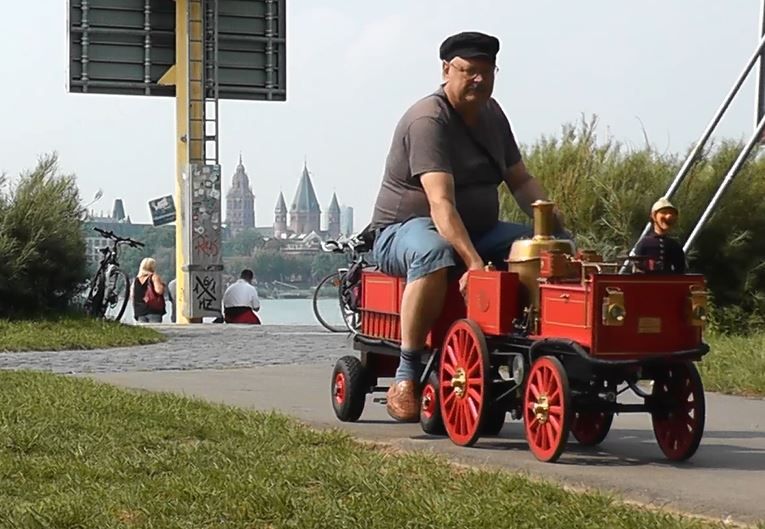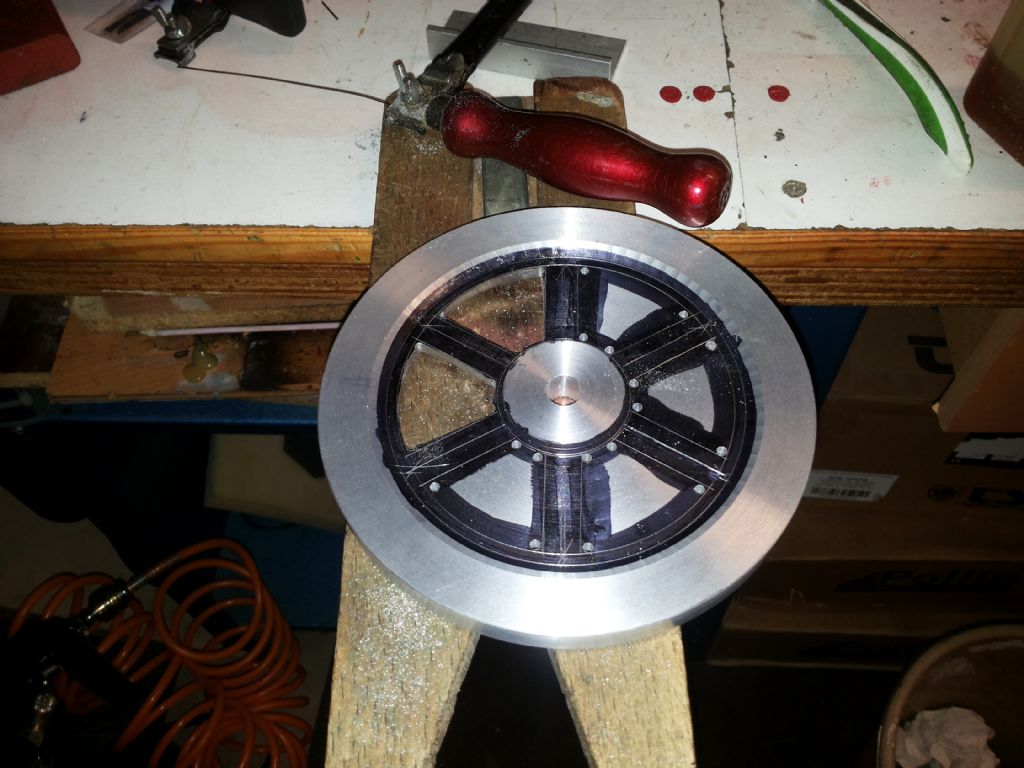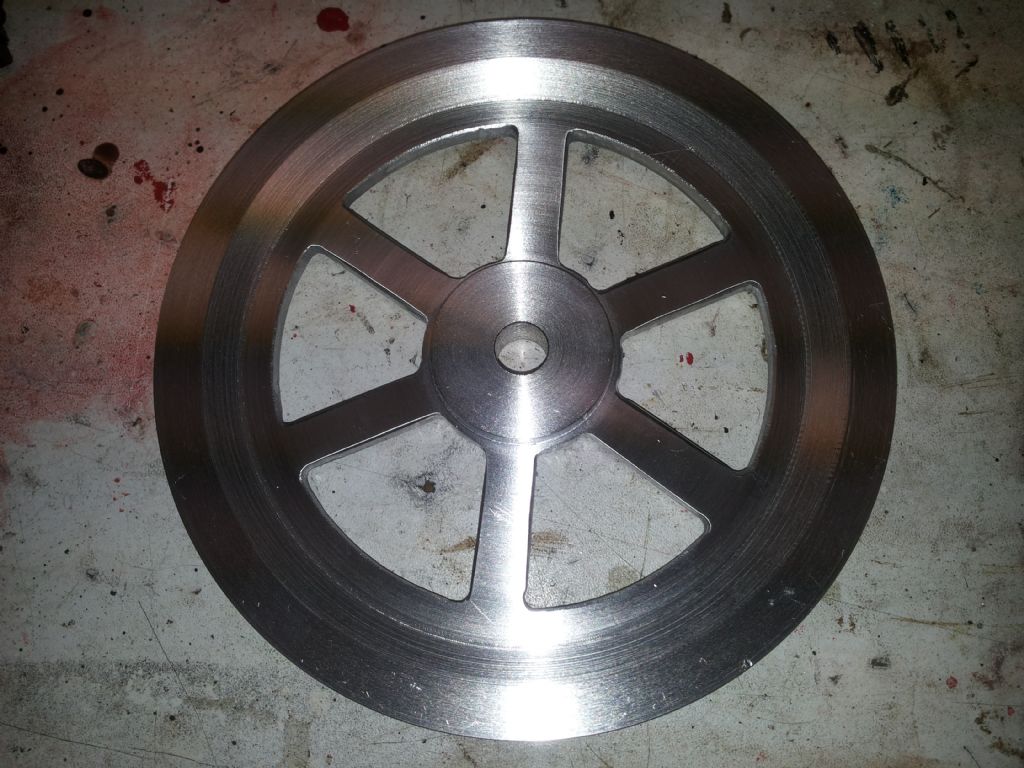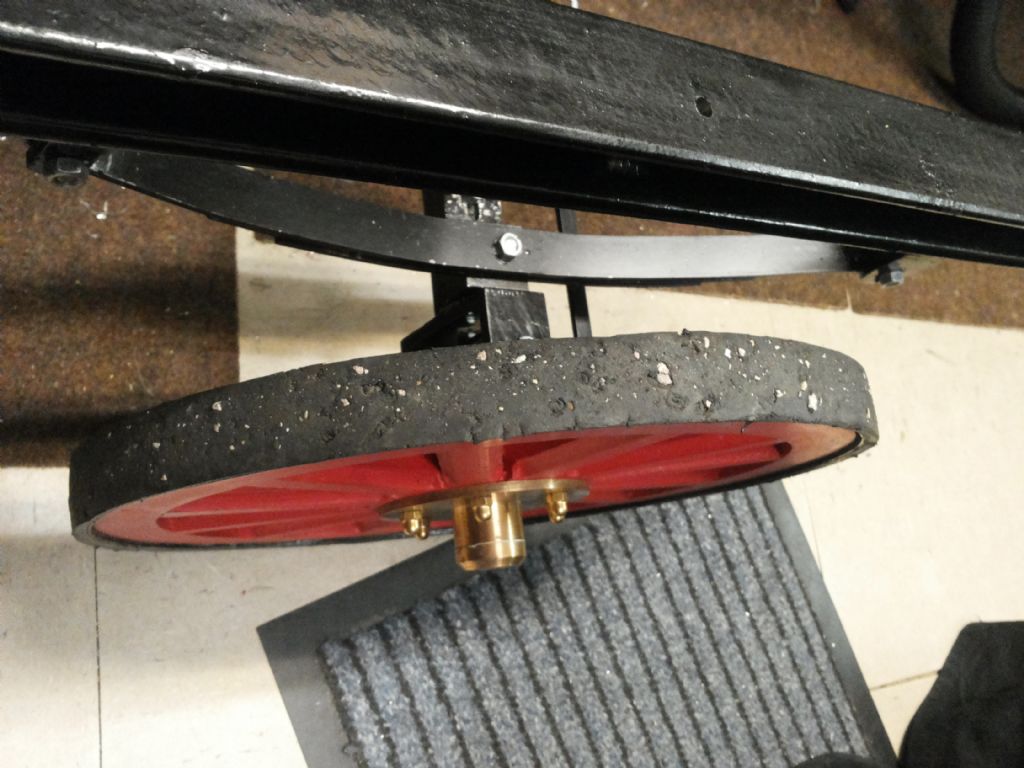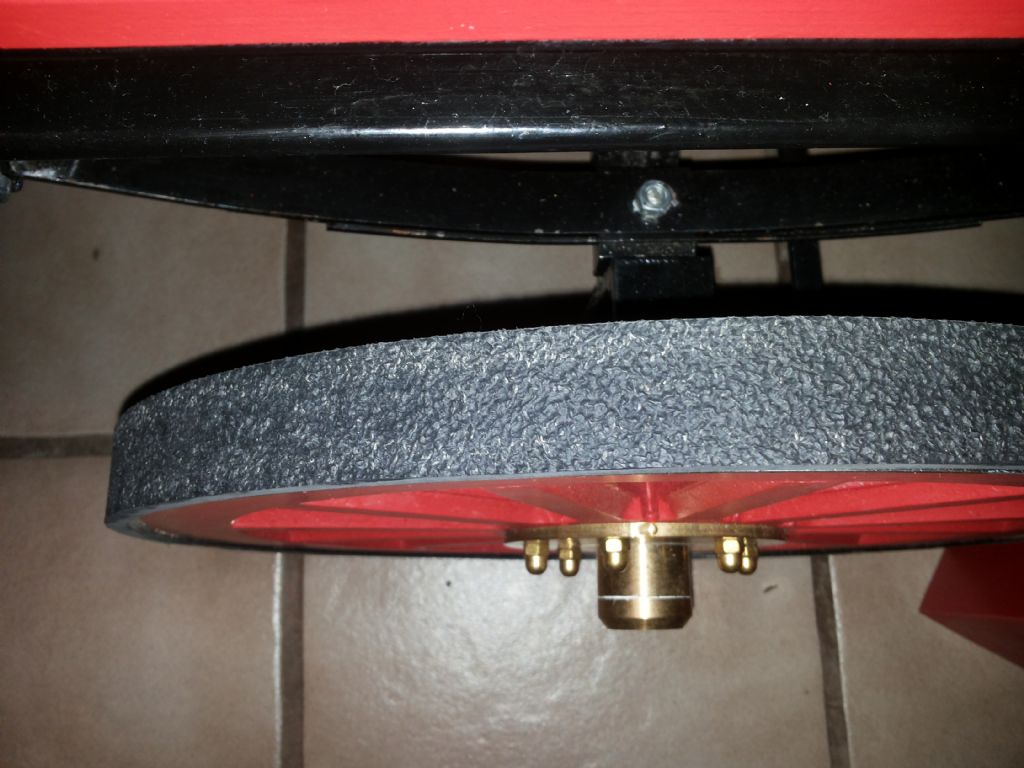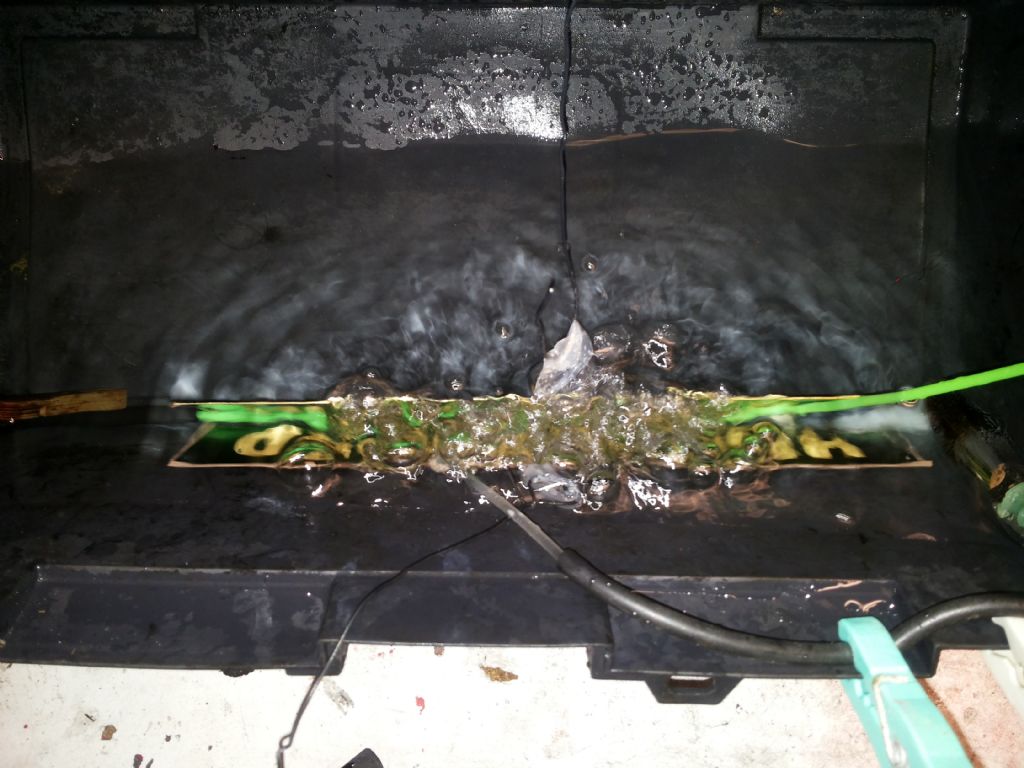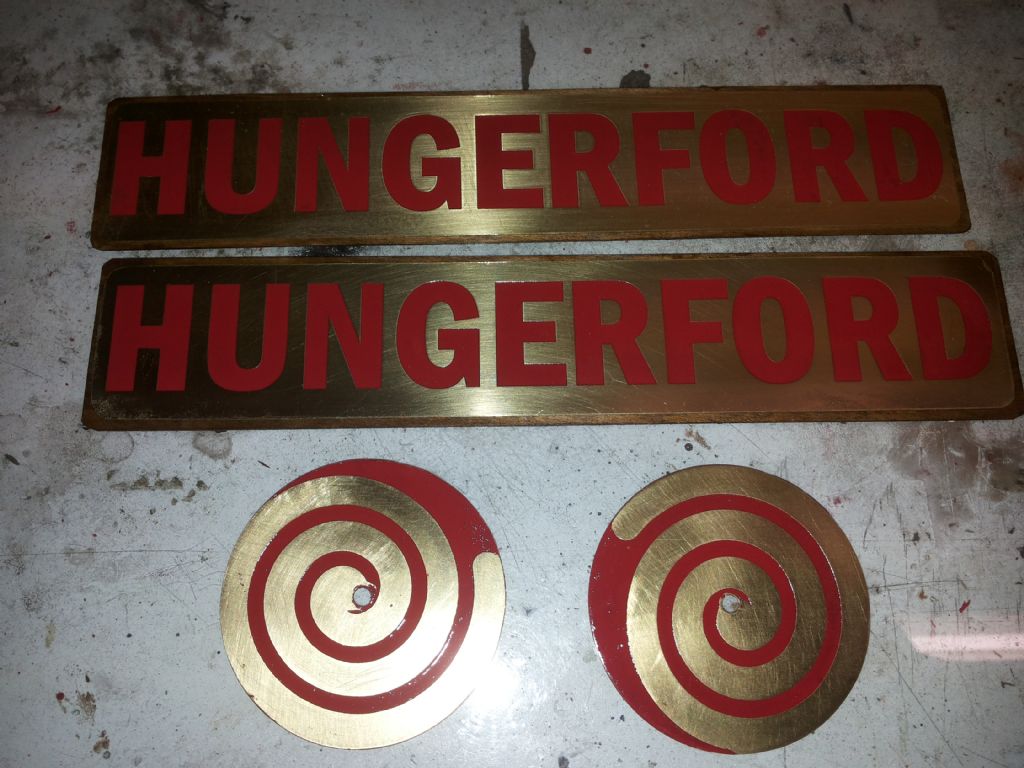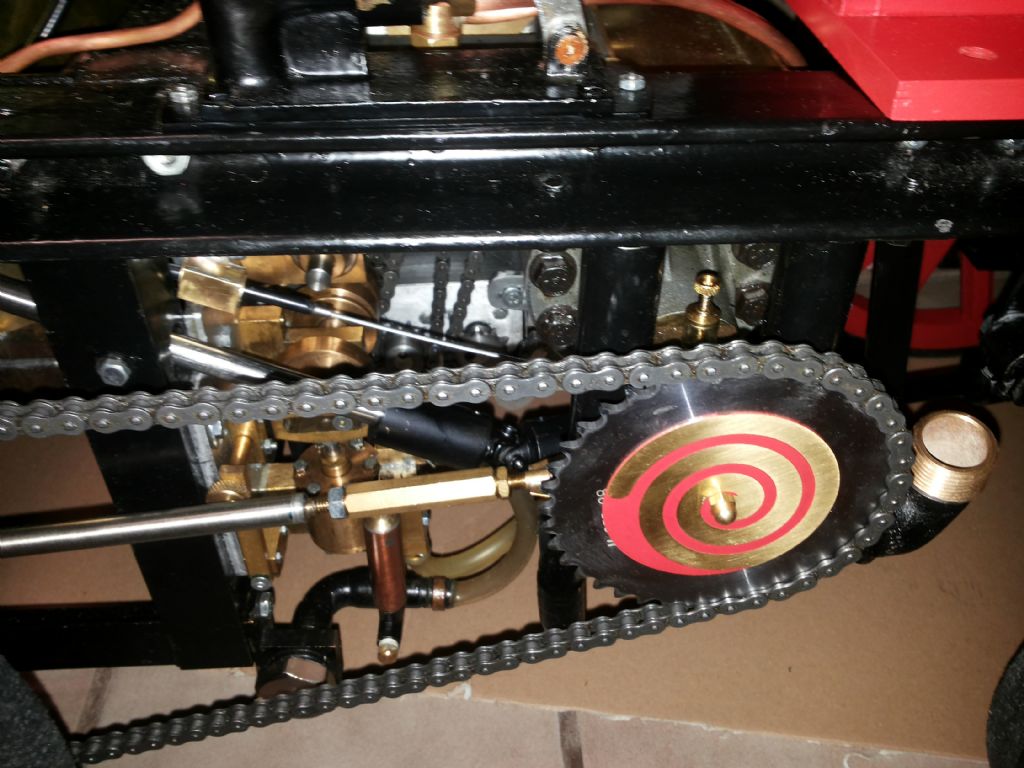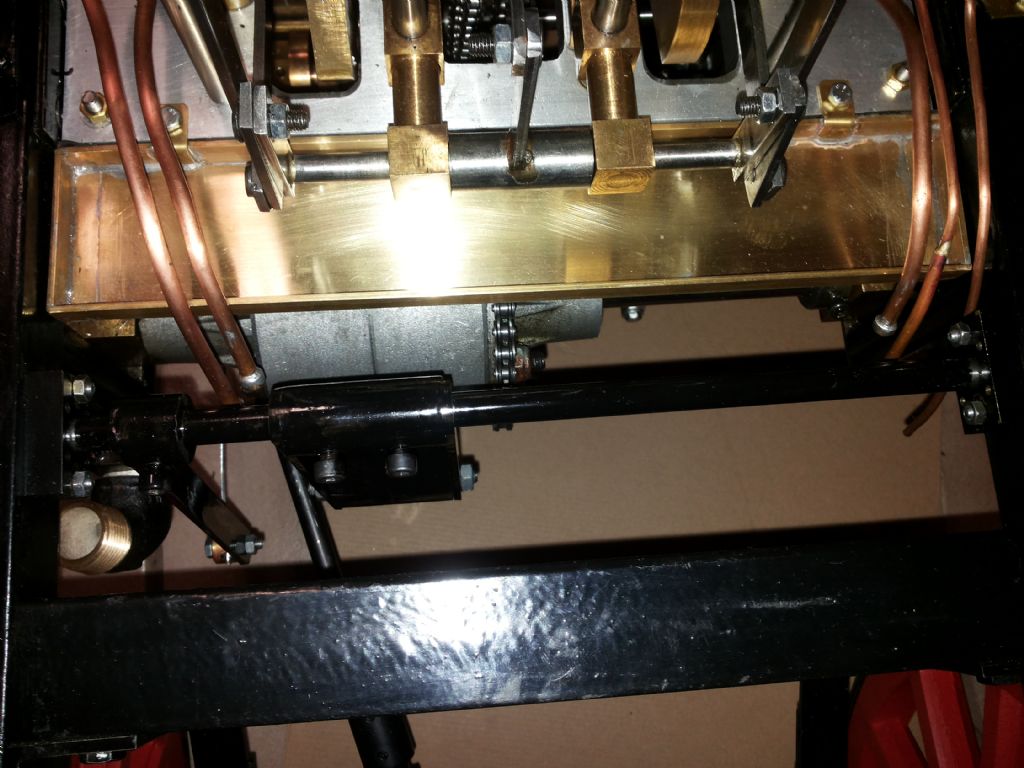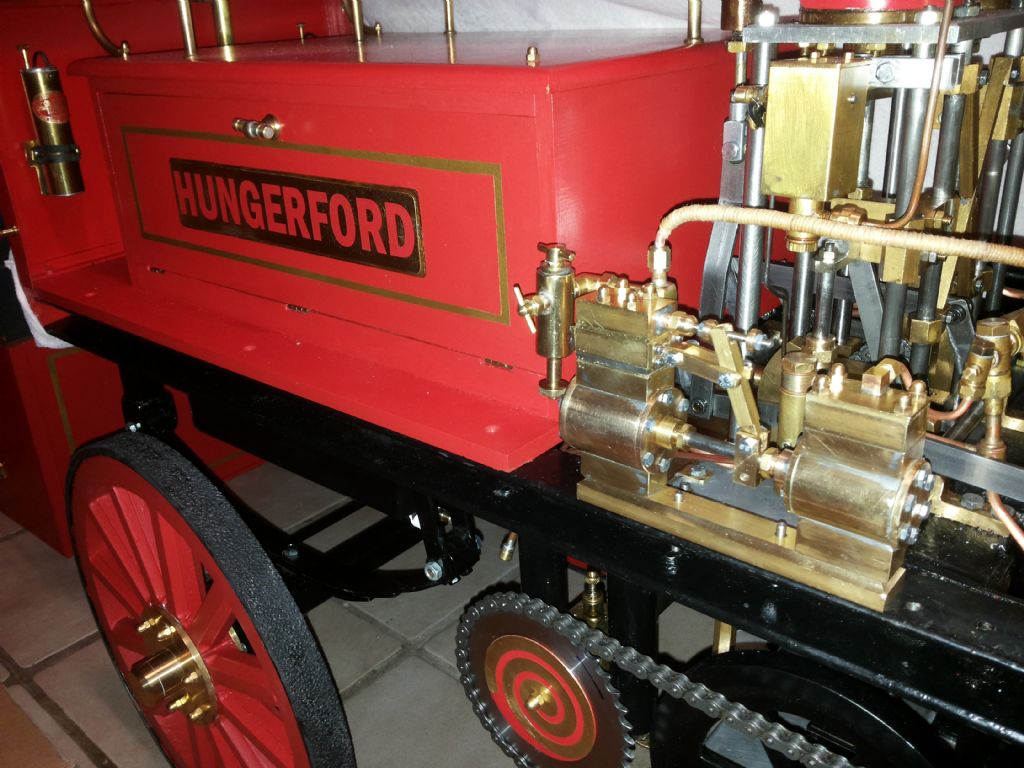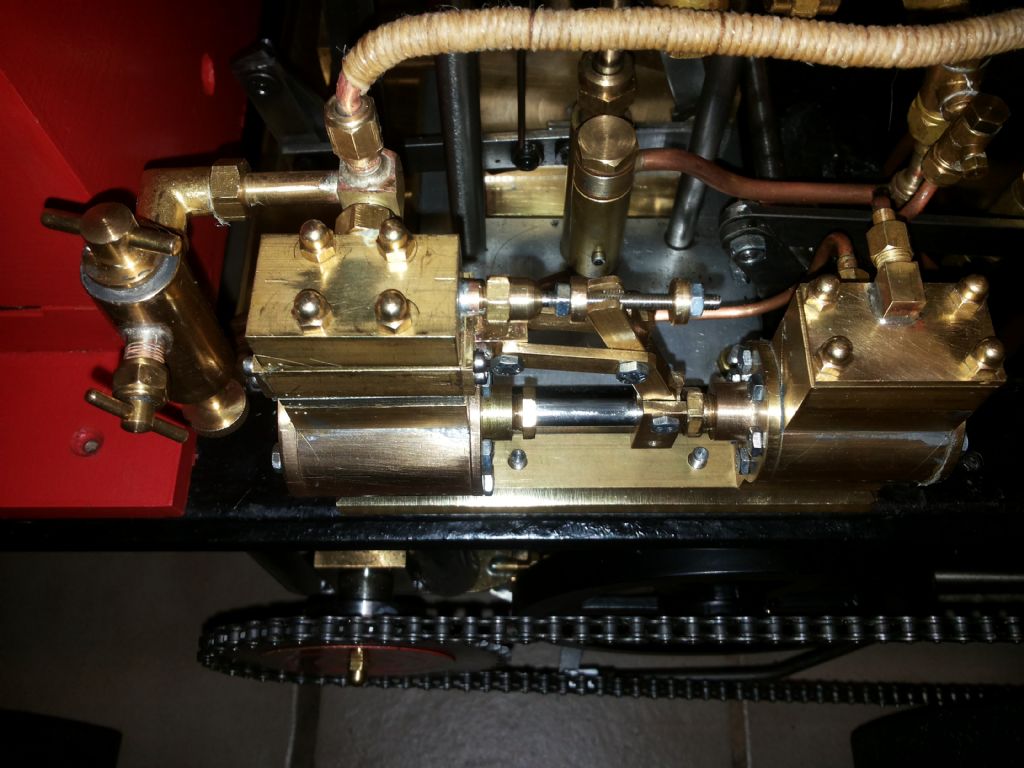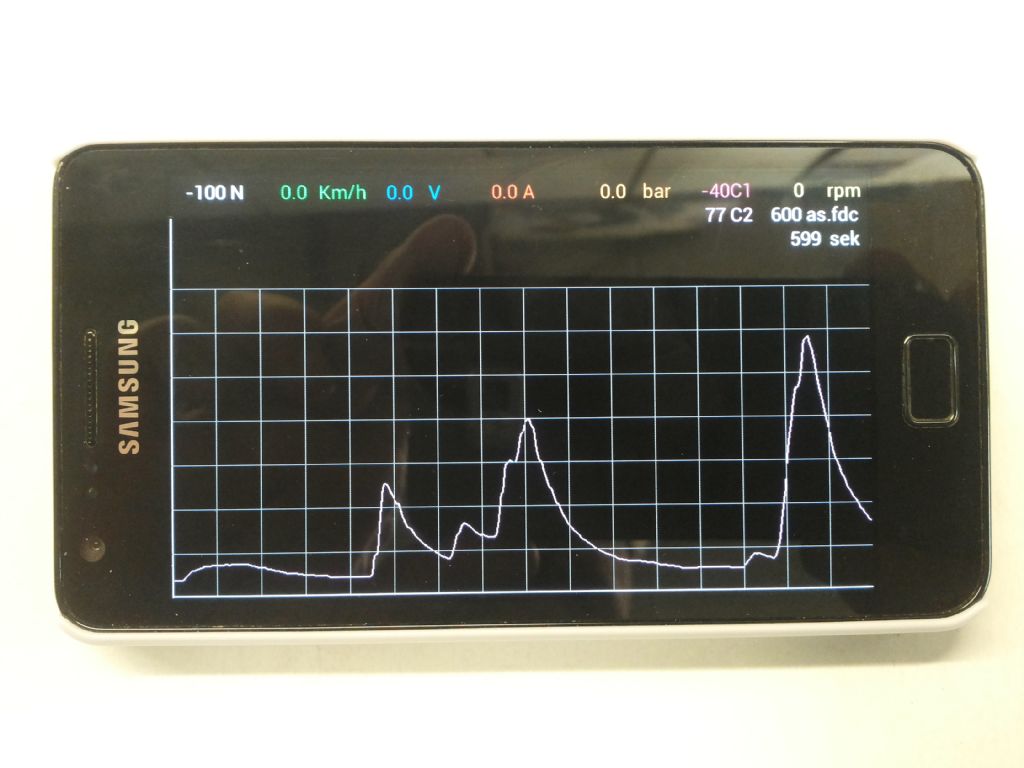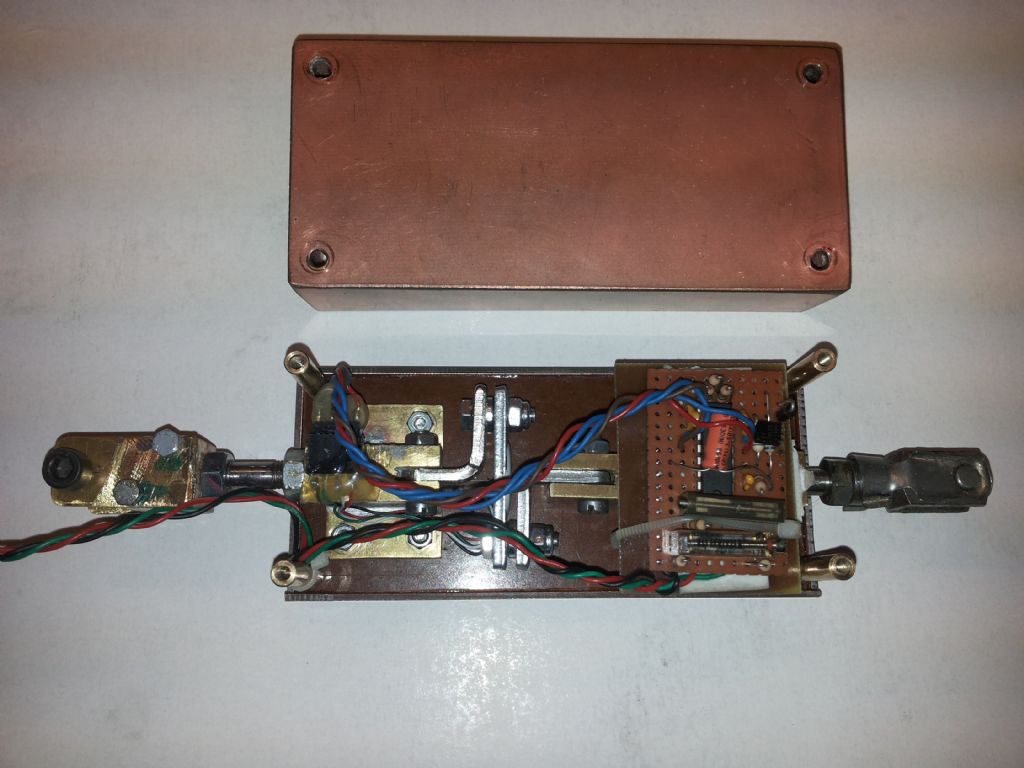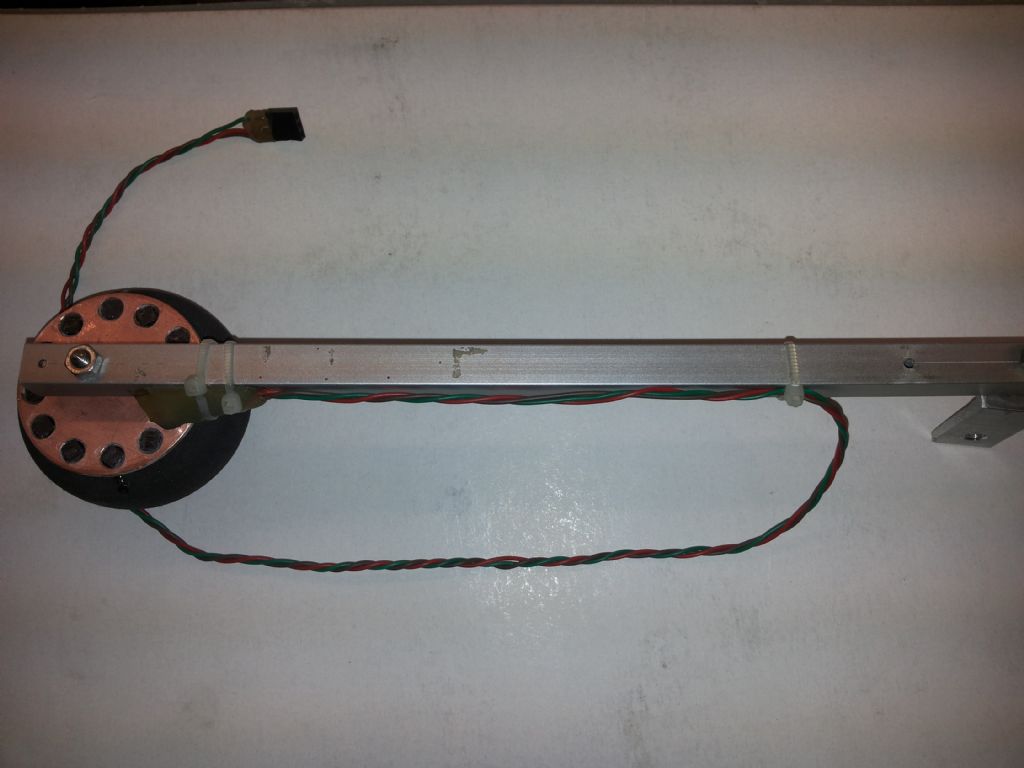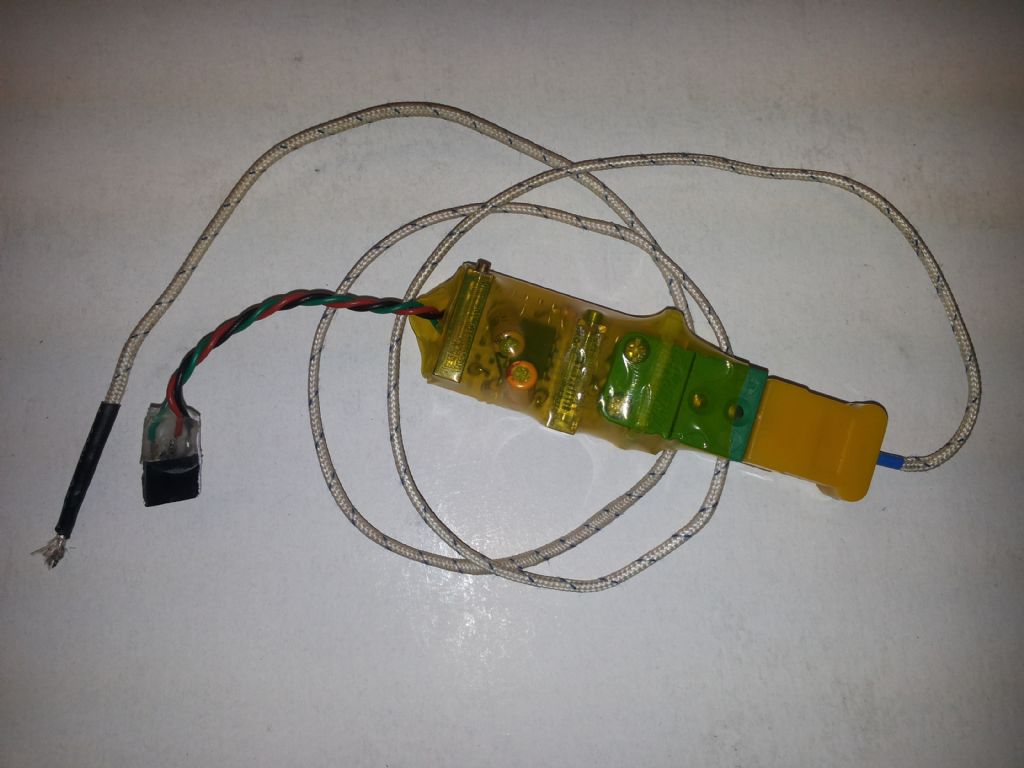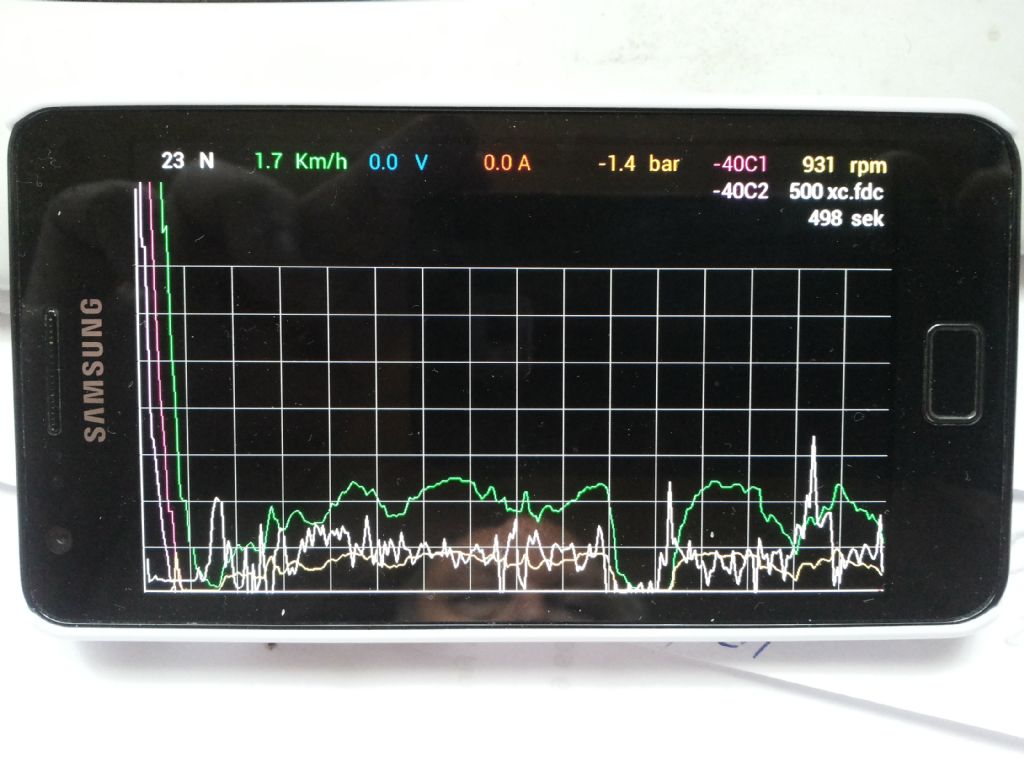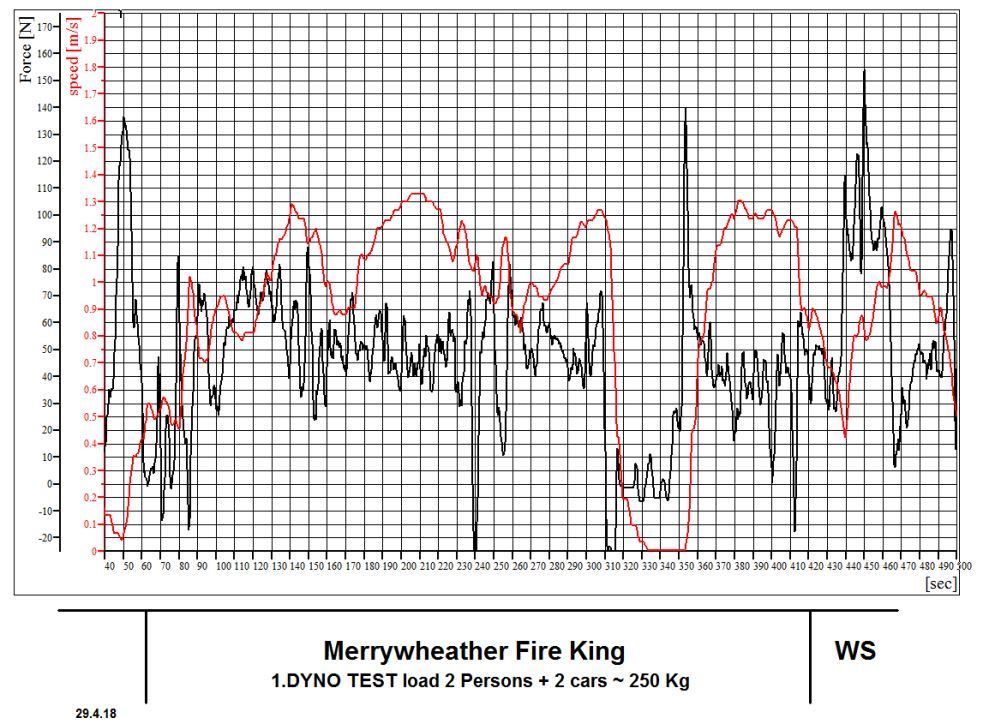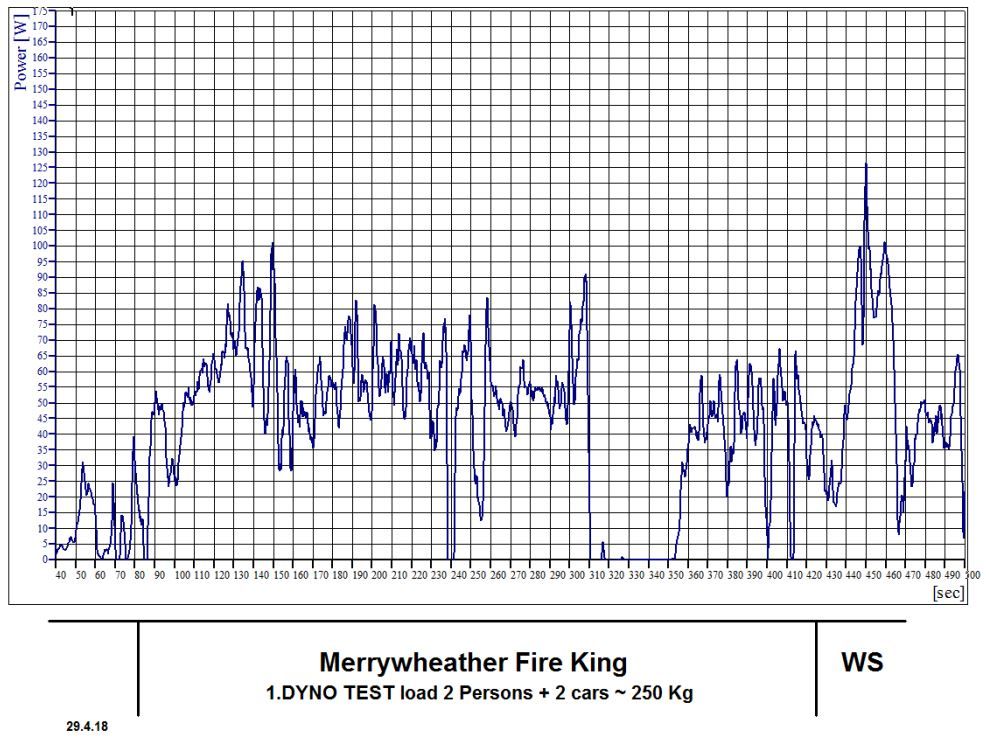Hello all ,
after the Mannheim steam event i drove at our club track and there was some knocking noise hearable ,but it was hard to find out on witch part of the steam engine. I recognized that it was good to strip as many as possible from the frame in the garage,because i was not able to bring the machine over the stairs in to the basement. With the front part,the side tanks and the boiler detached, it was easier to investigate the noise.
After stripping off i found that the attachement of the eccentric crank was not solid and there was lash.
I stripped the shaft out of the engine and i added a feather key groove.I made the feather key to a very strong fit.
Now i hope that it will withstand the power of the engine. To get a smoother running of the engine during water pumping with the fire pump ,I decided to add a flywheel. The material I had in stock.
The flywheel under construction
the end machining was made with a small round table on the milling machine.

It was a good exercise to do it ,if it is not heavy enough i made it from brass again.
My rubber tires ,a 65 shore rubber, collects many stone from the road and they looked very bad after 34 Km of running.

So I looked for harder material . The idea came up to calculate how is the force where the wheel is standing at the road. With this calculation i had the idea it is nearly equivillant to a woman s heel. So i looked in google to shoe maker supplies and i found hard rubber in longer stripes. It was in a good price available.

The surface structure is like asphalt.
In between I made the etching plates for the town name. I decide my fireking had the nearest fit to the fireking witch was in service in hungerford as i have an old picture of it.
The large plate i was not able to make in my standard way .I had to do some improvisation. I searched in the house a larger dish. I had no success. As I want to clean my tool box I recognized that is the best way to use the empty box and made it quick and dirty.

It was very at the limit , the result was not 100% perfect but good enough to use it.

I had the problem that the etching was over 1 hour and the photo resist has some weak point on the downside of the letters.
Atached on the doors it looked like the original for me

I hope you can enjoy the discription.
best regards
Werner
Edited By Werner Schleidt on 12/11/2017 15:23:49
 David George 1.
David George 1.



